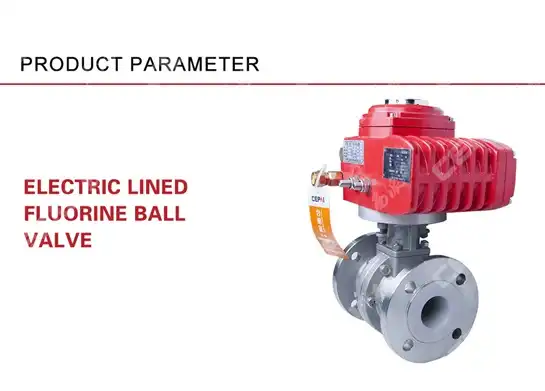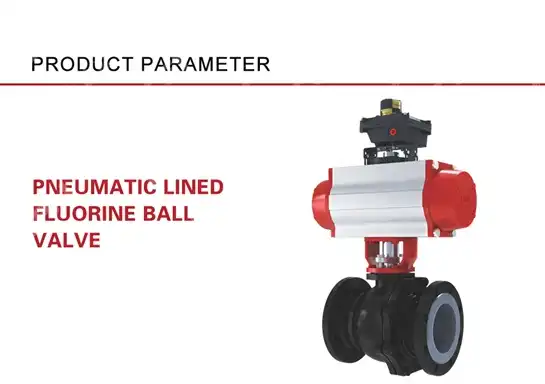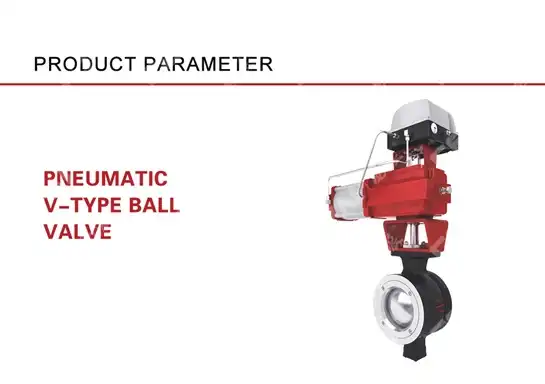Top-Rated Ball Valves for Corrosion Resistance in Harsh Environments
When industrial facilities face corrosive chemical exposure, extreme temperatures, and aggressive media attacks, standard ball valves simply fail to deliver the reliability needed. These challenging conditions demand specialized ball valve solutions that can withstand years of harsh environmental exposure without compromising operational safety or performance integrity. This comprehensive guide reveals the most effective ball valve technologies and material selections for corrosion resistance, helping engineers and procurement professionals make informed decisions that protect their critical infrastructure investments while ensuring long-term operational reliability in the most demanding industrial applications.
Understanding Corrosion Resistance in Ball Valve Applications
Corrosion resistance in ball valves represents a complex engineering challenge that extends far beyond simple material selection. Common materials used for ball valves in corrosive environments include stainless steel, brass, and plastic, but the selection process requires careful consideration of multiple factors including chemical compatibility, temperature ranges, pressure requirements, and long-term durability expectations. The ball valve design must incorporate advanced metallurgy, precision manufacturing techniques, and specialized coatings to create a barrier against corrosive attack. Modern corrosion-resistant ball valves utilize sophisticated material science principles to combat various forms of degradation including uniform corrosion, pitting corrosion, crevice corrosion, and stress corrosion cracking. The valve body, ball, seats, and sealing components must work in harmony to provide comprehensive protection against aggressive media. Advanced ball valve designs incorporate features such as anti-static devices, fire-safe constructions, and blow-out-proof stems to ensure reliable operation even under extreme conditions.

-
Critical Factors Affecting Ball Valve Corrosion Performance
The performance of corrosion-resistant ball valves depends on numerous interconnected variables that must be carefully evaluated during the selection process. Chemical composition of the process media plays a fundamental role in determining the appropriate material specifications, as different chemicals attack various materials through different mechanisms. Temperature fluctuations can accelerate corrosion processes and affect the mechanical properties of valve components, requiring careful consideration of thermal expansion coefficients and material stability at operating temperatures. Pressure conditions within the system create additional stress on valve components that can interact with corrosive environments to accelerate degradation processes. Flow velocity and turbulence patterns can influence erosion-corrosion phenomena, particularly in applications involving abrasive particles or high-velocity fluid streams. The presence of oxygen, moisture, and other environmental factors can significantly impact the corrosion behavior of ball valve materials, necessitating comprehensive environmental analysis during the design phase.
Advanced Materials and Technologies for Harsh Environment Ball Valves
-
Stainless Steel Ball Valve Solutions
Stainless steel remains the most widely specified material for corrosion-resistant ball valves due to its excellent combination of mechanical properties, corrosion resistance, and cost-effectiveness. Stainless steel ball valves hold up better in corrosive environments, withstand higher temperatures and pressures compared to many alternative materials, making them suitable for a broad range of industrial applications. Different grades of stainless steel offer varying levels of corrosion resistance, with austenitic grades like 316L providing superior performance in chloride-containing environments. The microstructure of stainless steel plays a crucial role in its corrosion resistance properties, with factors such as grain size, phase distribution, and inclusion content affecting the material's ability to resist various forms of attack. Advanced stainless steel ball valves incorporate specialized manufacturing techniques such as solution annealing, controlled cooling rates, and surface finishing processes to optimize corrosion resistance. These valves often feature hardened ball surfaces achieved through processes like hard chrome plating, tungsten carbide coating, or specialized heat treatment procedures to enhance wear resistance and extend service life.
-
Exotic Alloy Ball Valve Applications
For the most demanding corrosive environments, exotic alloy ball valves provide unparalleled performance and reliability. Materials including titanium, stainless steel, Hastelloy, and other alloys may be employed depending on the specific application requirements and chemical compatibility considerations. Hastelloy alloys offer exceptional resistance to both oxidizing and reducing environments, making them ideal for chemical processing applications involving acids, alkalis, and mixed chemical systems. Titanium ball valves provide outstanding corrosion resistance in oxidizing environments while maintaining excellent strength-to-weight ratios and biocompatibility characteristics. These valves find particular application in pharmaceutical manufacturing, food processing, and marine environments where both corrosion resistance and material purity are critical. Inconel and other nickel-based superalloys offer superior performance at elevated temperatures while maintaining corrosion resistance, making them suitable for high-temperature chemical processing applications.
-
Specialized Coating and Lining Technologies
Modern ball valve design incorporates advanced coating and lining technologies to provide corrosion protection while maintaining cost-effectiveness. Ball: Solid or coated with hard chrome, tungsten carbide, or Ni-P alloy represents common approaches to enhancing ball surface properties for corrosive service. These coatings provide a barrier between the base material and the corrosive environment while offering superior wear resistance and surface hardness characteristics. Polymer linings such as PTFE, PFA, and ETFE provide excellent chemical resistance across a broad range of aggressive chemicals while maintaining smooth surface finishes that minimize contamination risks. These linings can be applied using various techniques including compression molding, injection molding, and specialized bonding processes to ensure long-term adhesion and performance. Advanced ceramic coatings offer exceptional hardness and chemical inertness, making them suitable for applications involving highly abrasive or chemically aggressive media.
Industry-Specific Applications and Performance Requirements
-
Chemical Processing Industry Ball Valve Specifications
The chemical processing industry presents some of the most challenging environments for ball valve applications, requiring careful consideration of chemical compatibility, temperature cycling, and safety requirements. Chemical resistant ball valves are ideal for corrosive applications due to their ease of use and flow control, providing reliable shutoff capability and precise flow modulation in critical process applications. These valves must comply with stringent industry standards including API specifications, ASME codes, and various international quality standards. Chemical processing ball valves often incorporate specialized design features such as extended bonnets for cryogenic service, heating jackets for viscous media handling, and specialized packing systems for fugitive emission control. The valve internals must be designed to minimize dead spaces where corrosive chemicals could accumulate and cause localized attack. Advanced ball valve designs incorporate features such as cavity relief mechanisms, self-draining configurations, and easy maintenance access to ensure long-term reliability in chemical service applications.
-
Oil and Gas Industry Corrosion Challenges
Oil and gas production environments present unique challenges for ball valve performance due to the presence of hydrogen sulfide, carbon dioxide, chlorides, and other corrosive substances commonly found in production fluids. Sour service applications require specialized materials and design considerations to prevent sulfide stress cracking and hydrogen-induced cracking phenomena that can lead to catastrophic valve failure. Ball valves for these applications must comply with NACE standards and incorporate specialized metallurgy to ensure safe operation. Offshore and subsea applications impose additional requirements including saltwater corrosion resistance, cathodic protection compatibility, and specialized sealing systems to prevent seawater ingress. These environments require ball valves with enhanced material specifications, specialized coatings, and robust design features to withstand the combined effects of corrosive process fluids and harsh environmental conditions. Advanced ball valve designs for offshore applications incorporate features such as lockout/tagout capabilities, position indication systems, and emergency shutdown functionality to ensure safe operation in remote locations.
-
Power Generation and Utility Applications
Power generation facilities utilize ball valves in various corrosive applications including flue gas desulfurization systems, cooling water circuits, and chemical treatment systems. These applications often involve elevated temperatures, thermal cycling, and exposure to aggressive chemicals that can accelerate corrosion processes. Pick materials like stainless steel and PTFE for ball valves. These materials last longer and lower repair costs in power plant applications where reliability and maintenance efficiency are critical operational factors. Nuclear power applications impose additional requirements including radiation resistance, nuclear quality assurance programs, and specialized testing procedures to ensure safe operation in reactor environments. Ball valves for nuclear service must incorporate features such as hard-faced seating surfaces, specialized packing systems, and enhanced documentation to meet stringent nuclear industry standards. These valves often undergo extensive testing including hydrostatic testing, seat leakage testing, and specialized inspection procedures to verify performance capabilities.
Quality Assurance and Testing Standards for Corrosion-Resistant Ball Valves
-
Manufacturing Excellence and Quality Control Systems
The production of high-quality corrosion-resistant ball valves requires comprehensive quality management systems that ensure consistent performance and reliability. ISO 9001 quality management principles provide the foundation for systematic quality control throughout the manufacturing process, from raw material procurement through final testing and delivery. Advanced manufacturing facilities incorporate statistical process control techniques, automated inspection systems, and comprehensive documentation procedures to ensure product quality and traceability. Material certification and testing procedures play a critical role in ensuring the corrosion resistance properties of finished ball valves. Raw materials undergo comprehensive chemical analysis, mechanical testing, and corrosion testing to verify compliance with specified requirements. Manufacturing processes such as casting, forging, machining, and assembly are conducted under controlled conditions with regular monitoring and inspection to ensure dimensional accuracy and surface quality requirements are met.
-
Performance Testing and Validation Procedures
Comprehensive testing programs validate the performance capabilities of corrosion-resistant ball valves under actual operating conditions. Hydrostatic testing verifies the pressure-containing capability of valve components while seat leakage testing ensures proper sealing performance across the specified operating range. Corrosion testing using standardized test methods provides quantitative data on material performance in specific corrosive environments, enabling accurate service life predictions and maintenance interval determination. Advanced testing facilities incorporate specialized equipment for elevated temperature testing, cyclic loading evaluation, and accelerated corrosion assessment to validate long-term performance capabilities. Fire testing procedures verify the safety performance of ball valves in emergency situations while cryogenic testing ensures reliable operation at low temperatures. Environmental testing evaluates valve performance under various atmospheric conditions including humidity, salt spray, and temperature cycling to ensure reliable operation in diverse installation environments.
Selection Criteria and Engineering Considerations
-
Technical Specifications and Performance Parameters
The selection of appropriate corrosion-resistant ball valves requires careful evaluation of technical specifications including pressure ratings, temperature ranges, flow coefficients, and operating torque requirements. Know the limits of temperature and pressure. Use valves that work well in tough conditions to stop leaks and ensure safe operation throughout the specified service life. Flow characteristics must be matched to system requirements to ensure optimal performance and energy efficiency. Valve sizing calculations must consider factors such as pressure drop, cavitation potential, and flow velocity to ensure proper hydraulic performance. Actuator compatibility and mounting considerations affect installation requirements and operational capabilities, particularly for automated valve systems. End connection specifications must be compatible with existing piping systems while providing reliable sealing performance under operating conditions.
-
Lifecycle Cost Analysis and Economic Considerations
The economic evaluation of corrosion-resistant ball valves must consider both initial capital costs and long-term operational expenses including maintenance, replacement, and downtime costs. High-quality ball valves with superior corrosion resistance typically provide better long-term economic performance despite higher initial costs due to extended service life and reduced maintenance requirements. Lifecycle cost analysis should include factors such as energy consumption, maintenance intervals, spare parts availability, and replacement costs over the expected service life. Risk analysis considerations include the potential consequences of valve failure including safety risks, environmental impact, and production losses. Critical applications may justify premium materials and enhanced design features to minimize failure risks and ensure reliable operation. Total cost of ownership calculations should consider installation costs, commissioning requirements, training needs, and long-term support availability when evaluating different valve options.

Conclusion
Top-rated ball valves for corrosion resistance in harsh environments represent sophisticated engineering solutions that combine advanced materials, precision manufacturing, and comprehensive quality assurance to deliver reliable performance in the most challenging industrial applications. The selection process requires careful evaluation of chemical compatibility, operating conditions, performance requirements, and economic considerations to ensure optimal valve performance and long-term reliability.
Cooperate with CEPAI Group Co., LTD.
CEPAI Group Co., LTD. stands as a leading China Ball Valve factory with over 15 years of specialized experience in manufacturing high-performance corrosion-resistant ball valves for demanding industrial applications. Established in January 2009 with 200 million yuan registered capital, our 56,000 square meter facility represents the pinnacle of intelligent manufacturing technology, featuring the longest high-precision flexible production line in the Asia Pacific region. As a certified China Ball Valve supplier with API6A, API6D, ISO9001, and CE certifications, we have earned supplier qualifications from PetroChina, Sinopec, and CNOOC, demonstrating our commitment to quality excellence.
Our China Ball Valve manufacturer capabilities encompass comprehensive Ball Valve for sale solutions including wellhead valves, pipeline valves, and specialized regulating valves designed for oil and gas drilling applications. With competitive Ball Valve price structures and High Quality Ball Valve manufacturing standards, CEPAI serves as your trusted China Ball Valve wholesale partner. Our advanced testing facilities and CNAS-certified laboratory ensure every valve meets international standards, while our remote AR maintenance system provides ongoing support. Whether you need standard products or customized solutions, our technical team is ready to assist. Contact us at cepai@cepai.com for inquiries and discover why leading companies choose CEPAI for their critical valve applications. Save this page for future reference whenever ball valve challenges arise.
FAQ
Q: What materials offer the best corrosion resistance for ball valves in chemical processing applications?
A: Stainless steel grades 316L and 317L, along with exotic alloys like Hastelloy C-276 and Inconel, provide excellent corrosion resistance. Material selection depends on specific chemical compatibility requirements and operating conditions.
Q: How do I determine the appropriate pressure rating for corrosion-resistant ball valves?
A: Pressure ratings must consider maximum operating pressure, temperature effects on material strength, and safety factors. Consult ASME B16.34 standards and manufacturer specifications for proper rating selection.
Q: What testing standards apply to corrosion-resistant ball valves for oil and gas applications?
A: API 6A, API 6D, and NACE standards are primary requirements. Additional testing may include API 607 fire testing, API 6FA fugitive emissions testing, and specialized sour service qualification testing.
Q: How often should corrosion-resistant ball valves be inspected and maintained?
A: Inspection intervals depend on service conditions, typically ranging from 6 months to 3 years. Harsh environments require more frequent inspection, while regular maintenance extends valve life significantly.
References
1. Smith, J.R. & Williams, K.T. "Corrosion Mechanisms in Industrial Ball Valves: Material Selection and Performance Analysis." Journal of Materials Engineering and Performance, Volume 28, American Society for Materials International.
2. Chen, L.H., Rodriguez, M.A. & Thompson, D.K. "Advanced Metallurgy for Corrosive Service Ball Valves in Chemical Processing Applications." Chemical Engineering Progress, American Institute of Chemical Engineers.
3. Anderson, P.B. & Liu, Y.S. "Performance Evaluation of Exotic Alloy Ball Valves in Sour Gas Service Conditions." Journal of Petroleum Technology, Society of Petroleum Engineers International.
4. European Committee for Standardization. "Industrial Valves - Metallic Ball Valves for General Purpose Applications: Testing and Quality Assurance Requirements." EN 19712 Technical Standard, CEN Publications.
_1746598568348.webp)
Get professional pre-sales technical consultation and valve selection services, customized solution services.

About CEPAI


